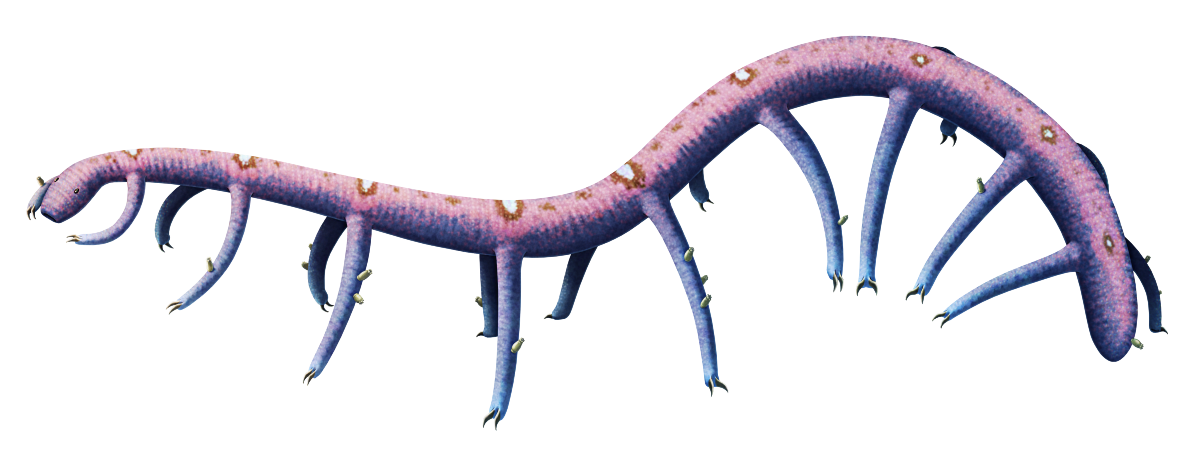Lobopodians were some of the earliest known panarthropods, closely related to velvet worms, tardigrades, and the ancestors of all the true arthropods. They were small soft-bodied worm-like animals with multiple pairs of fleshy legs, and some species also bore elaborate spikes, armor plates, and fleshy bumps all over their bodies – with the spiny Hallucigenia being the most famous example.
But unlike its more charismatic relative Paucipodia inermis here didn’t seem to have any ornamentation at all.
Known from the Chinese Chengjiang fossil deposits, dating to about 518 million years ago, Paucipodia lived in what was then a shallow tropical sea. Its 13cm long (~5″) tubular body had nine pairs of legs, with each foot tipped with a pair of hooked claws, and the inside of its mouth was ringed with tiny sharp teeth.
Several specimens have been found preserved in association with the weird gummy-disc animal Eldonia, which may indicate Paucipodia either preyed on them or scavenged on their carcasses.
Some Paucipodia fossils also have enigmatic tiny “cup-like” organisms attached to their legs. It’s currently unknown what exactly these were, or whether they were parasitic in nature or simply opportunistically “hitching a ride” similar to the Inquicus found on armored palaeoscolecid worms in the same fossil beds.

